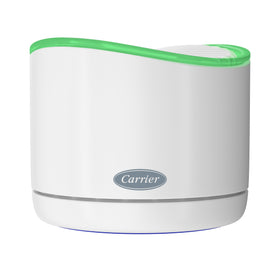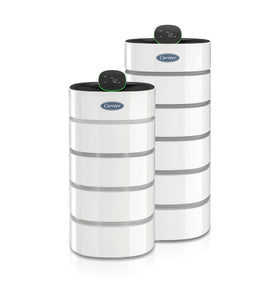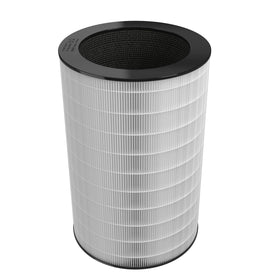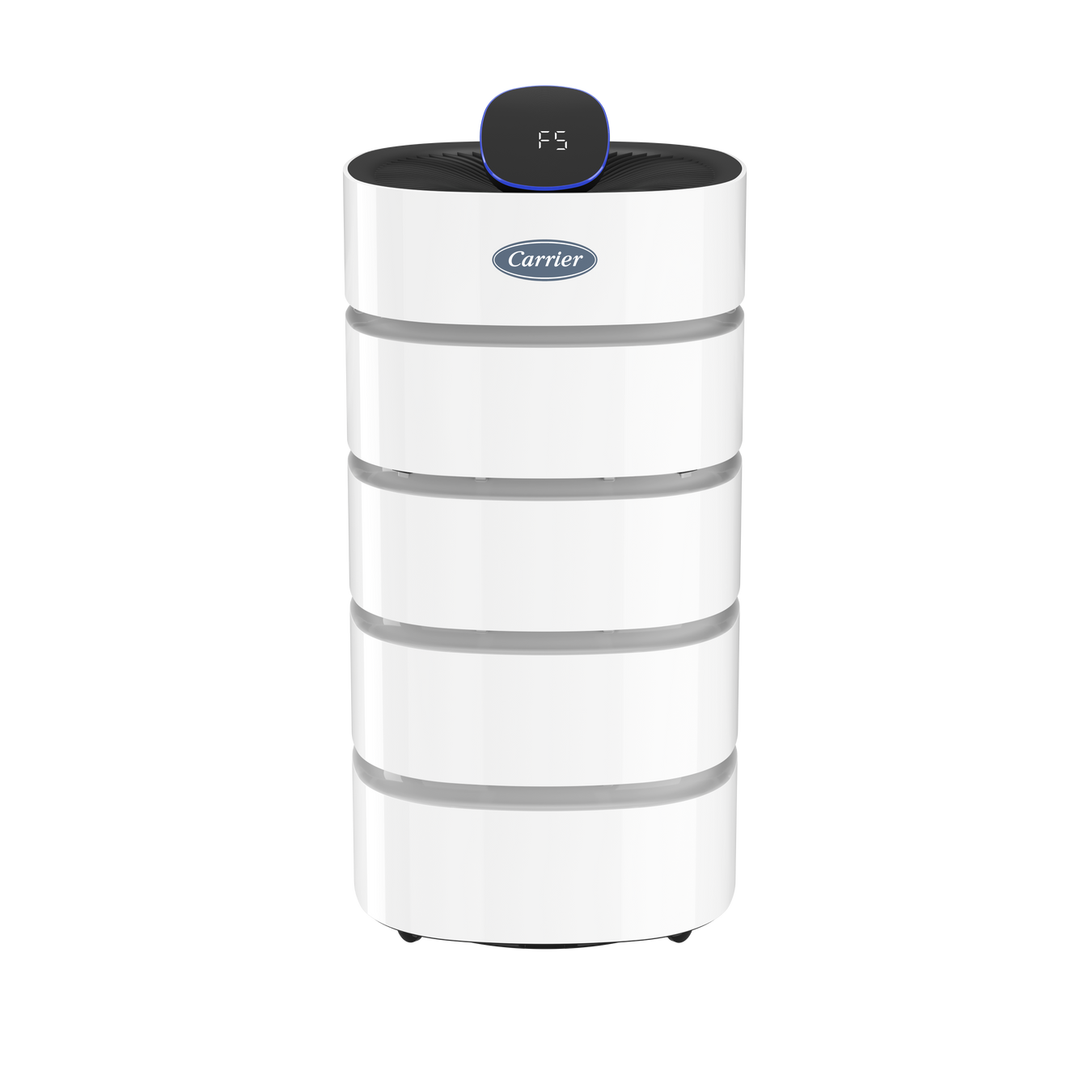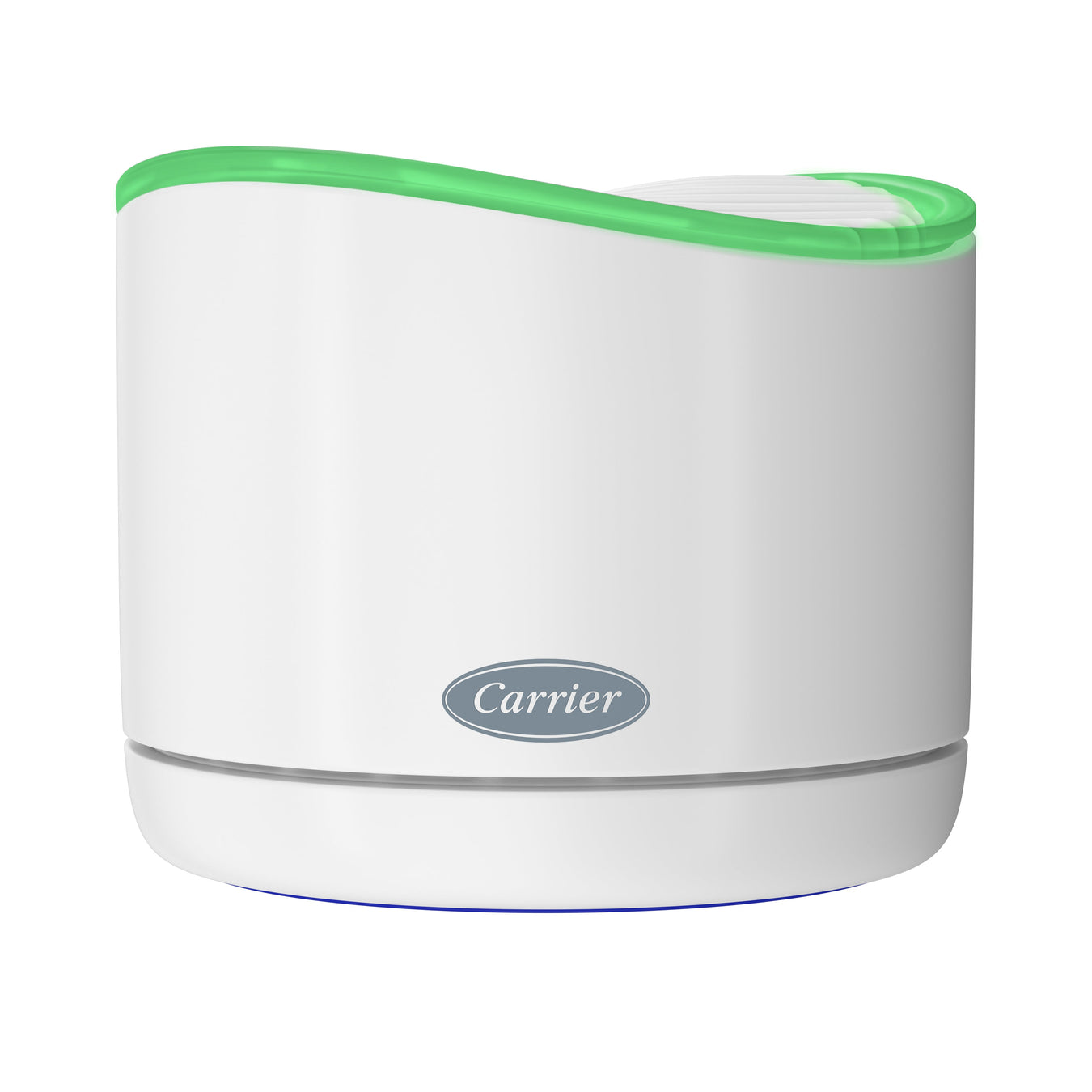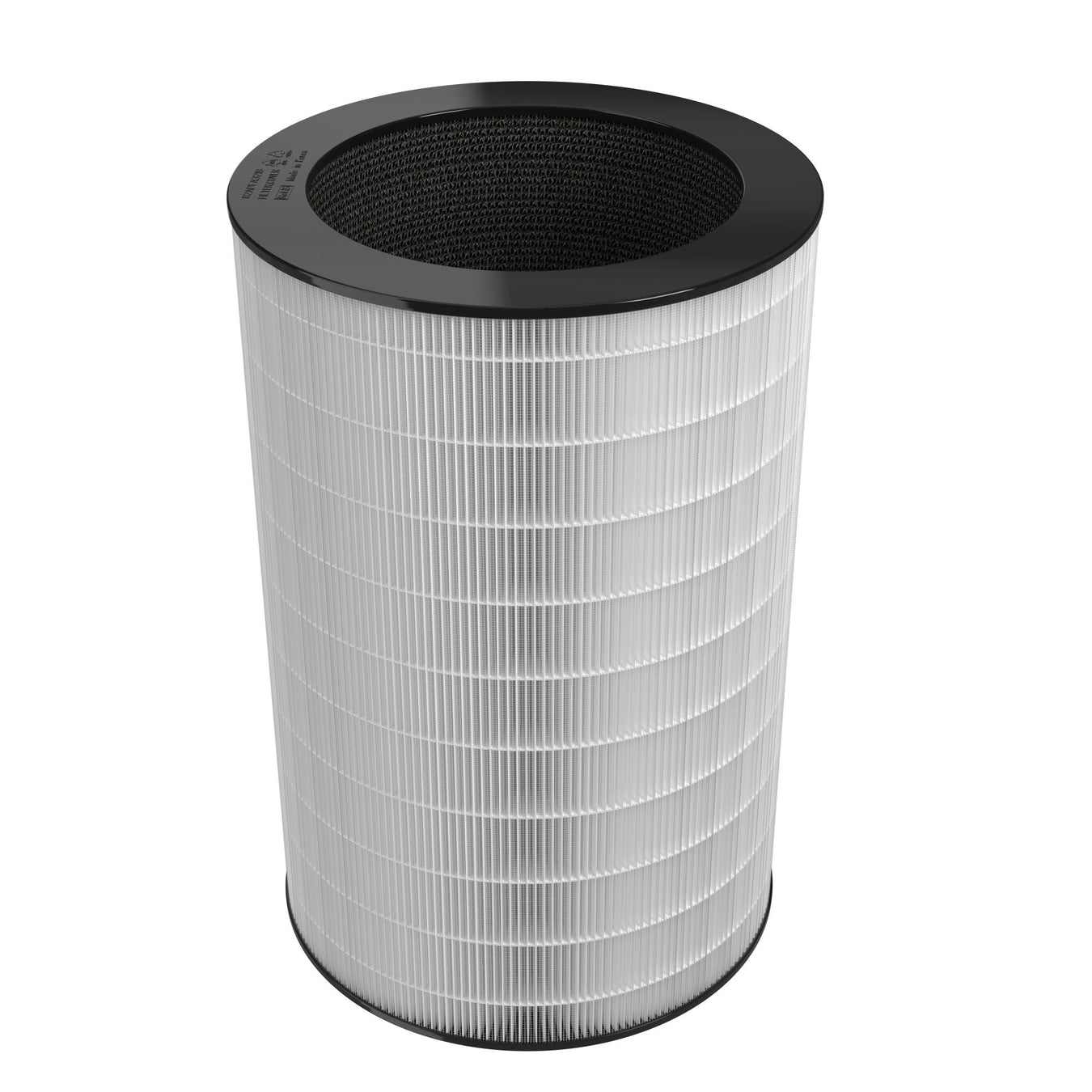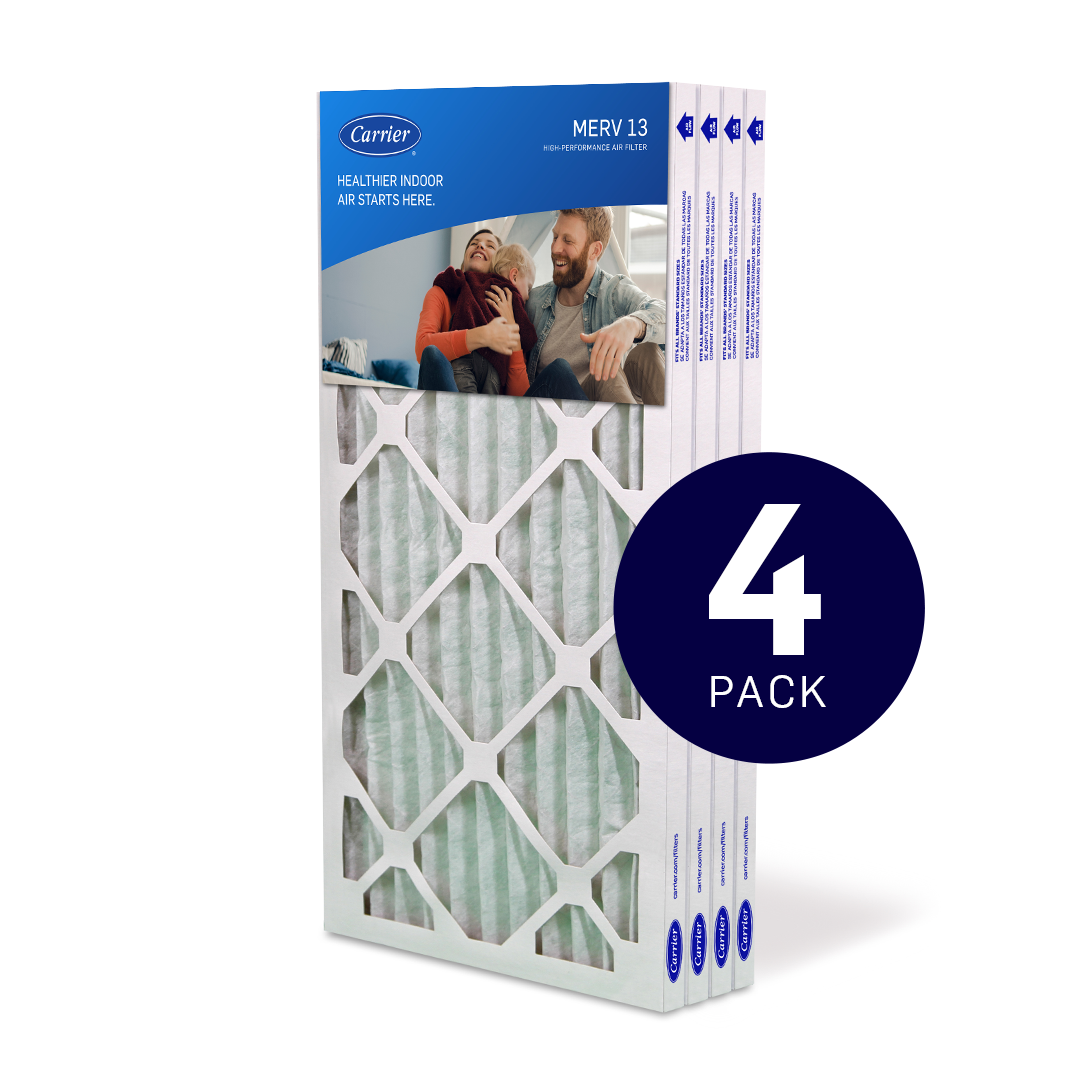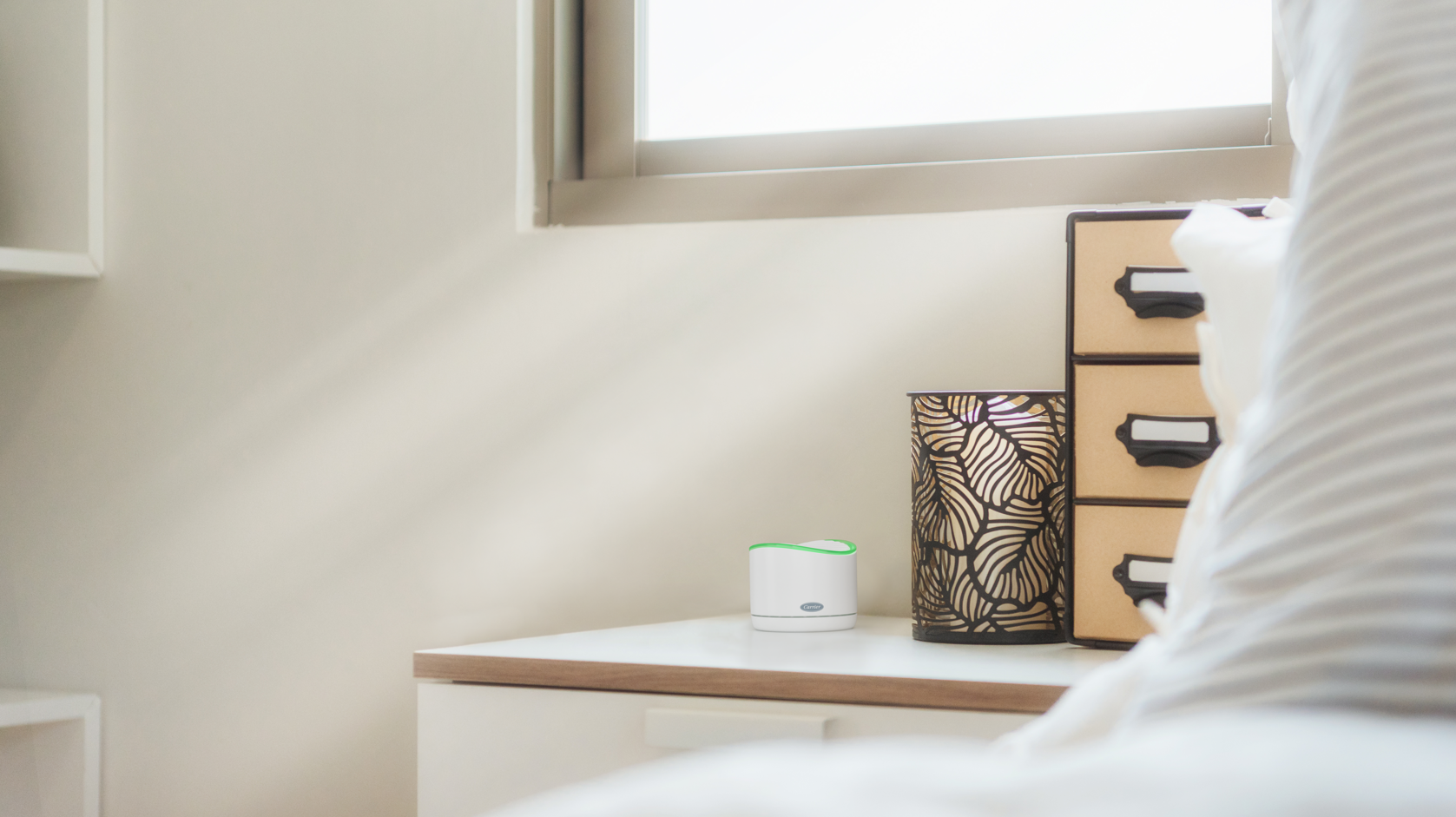
How to Measure Air Quality at Home?
If you are asking about how to measure air quality at home, it’s entirely likely you’re experiencing poor air quality. Maybe you’ve noticed faster than normal dust build-up, increased prevalence of unusual odors or an uptick in allergy symptoms such as sneezing, runny nose or itchy and watery eyes.
While these symptoms are easy to spot, getting an accurate measure of what’s in the air and finding a solution aren't as simple. Unlike indoor air humidity and temperatures, which can be measured by many HVAC thermostats, indoor air quality assessments must be performed using more specialized equipment.
The good news is, the experts at Carrier have a solution to assessing indoor air quality. The Carrier Air Monitor is an easy-to-use and affordable option for monitoring the air in your space and providing real time alerts and tips for improving the quality of your indoor air.
An air monitor can help take the guesswork out of assessing airborne pollutants and help you pinpoint solutions that make sense.
Things You Need To Know About How to Measure Air Quality Index at Home
The Environmental Protection Agency (EPA) established the Air Quality Index (AQI) to monitor pollutants regulated by the Clean Air Act. These include:
- ground-level ozone
- particle pollution
- carbon monoxide
- sulfur dioxide
- nitrogen dioxide
Each has a national standard that was established to help protect the health of the public.1 Of course, these indexes are for outdoor air. If you’re interested in how to measure air quality index at home, we should take a look at some of the pollutants typically found inside.

Indoor Pollutants
Indoor pollutants come from a number of sources. They can follow you inside through open doors or enter through poorly sealed windows. Many indoor pollutants come from materials inside your home, like flooring, carpeting, and paint. Still others are introduced through cooking, cleaning chemicals and pets. Here some examples:
Particulate Matter (PM): Particulate matter includes microscopic solids and liquid droplets small enough to pose a health risk when inhaled. PM is generally classified according to size: PM10 particles of 10 microns or smaller and PM2.5 particles that are 2.5 microns or smaller. Particulate matter can come directly from a source like construction or through chemical reactions in the atmosphere.2
Volatile Organic Compounds (VOCs): VOCs are gases emitted from a variety of sources. Some show no adverse health effects, while others can have a number of short or long-term effects that range from headaches to dizziness to memory impairment. VOCs can come from a wide variety of sources including paints, household chemicals and building materials.3
Carbon Monoxide (CO): CO is an odorless colorless gas that results from combustion. Common sources in a home include a gas or oil furnace, gas water heater, a gas stove or a fireplace. CO can cause nausea at lower concentrations and can be fatal at higher concentrations in your home.4
How Can I Monitor the Air Quality in My Home?
One vital solution is to install carbon monoxide (CO) detectors on each floor of your home. A carbon monoxide detector monitors your home for one specific issue – a very important one for the safety of your family. All homes with gas appliances should have working CO detectors installed.
For other types of pollutants, one option is to wait for physical symptoms to appear. These might include dust buildup or an uptick in allergy symptoms like sneezing, itchy eyes or runny nose. To stay ahead of the issue, a good way to test air quality is with a device specifically designed for the job – an indoor air quality monitor.
A good air quality monitor will detect PM2.5 fine particles and VOCs – airborne pollutants that can affect your comfort and aggravate allergy and asthma symptoms. It should be easy to set up and use and provide updates as air quality in your home changes. These benefits and more are all available with the Carrier Air Monitor. A Carrier Air Monitor will provide 24-7 monitoring, air quality notifications through the Carrier Home app, and it can be voice-controlled through the Amazon Alexa® and Google® Assistant platforms.5
What Are The Benefits Of Good Air Quality at Home?
If you follow the air quality index (AQI) on a regular basis, it’s comforting to know that you can escape to your home when outdoor air quality is low. Keep in mind, however, that the air in your home can be 2-5 times more polluted than outside air.6 That’s why finding a long-term solution for improving your indoor environment makes sense.
Studies have shown that using an air purifier in your home can help improve “at least one measure or marker of improved health outcome.”6 A few examples of those health outcomes or markers “include allergy and asthma symptoms and several markers of cardiovascular effects … associated with exposure to [particulate matter].” 7 Additionally, studies have shown that better air quality can even help improve cognitive function.8
Remember, the goal isn’t just having clean air in your home ... it’s targeting specific types of pollutants that can affect your well-being. For example:
- Reducing PM2.5 particles is important because this size particulate poses the greatest health risk with the ability to go deep into your lungs and even into your bloodstream.9
- Minimizing particles known to cause allergies, such as pet dander and pollen.
- Reducing airborne pollutants such as dust can keep furnishings and other surfaces cleaner to potentially reduce the frequency of cleaning and dusting.

How Can I Increase the Quality of Air in My Home?
Improving the quality of the air in your home can provide a number of benefits for the long term. And there are several ways to do it – with or without adding equipment to your HVAC system. Here are some suggestions:
- Eliminate or reduce sources of airborne pollutants such as tobacco smoke, cleaning supplies, cooking, and products used for home improvement like paint or stains.
- Clean/dust surfaces more frequently, vacuum with a HEPA filter, keep pets bathed/groomed, and wash bed sheets in hot water.
- Replace your furnace filter as per manufacturer’s recommendations.
- Manage indoor humidity and dampness by using bathroom fans when showering, fixing leaky plumbing or roofs, identifying, and eliminating other sources of pooling water or moisture.
- Improve ventilation by opening windows when outdoor air quality is acceptable, or by adding a Carrier whole-home ventilator to your HVAC system.
- Add a Carrier Infinity® air purifier to your HVAC system or use a Carrier Smart Air Purifier in frequently used spaces.
And, to keep track of indoor air quality, in real time, with updates pushed to your smart phone, we recommend purchasing and setting up a Carrier Air Monitor. This is an important step, because before you can successfully address your air quality issues, you’ll need to know how to measure indoor air quality at home.
Learn more about: What Does Unhealthy Air Quality Mean?
- AQI Basics | AirNow.gov
- Particulate Matter (PM) Basics | US EPA
- Volatile Organic Compounds' Impact on Indoor Air Quality | US EPA
- Carbon Monoxide's Impact on Indoor Air Quality | US EPA
- Wi-Fi® connection required. Works with Alexa®, Google® Assistant and select Apple® and Android™ mobile devices. Free Carrier Home App download required. See User Manual for more details.
- https://www.epa.gov/report-environment/indoor-air-quality
- https://www.epa.gov/sites/default/files/2018-07/documents/residential_air_cleaners_-_a_technical_summary_3rd_edition.pdf
- https://thecogfxstudy.com/
- https://www.epa.gov/pm-pollution/particulate-matter-pm-basics

